Tennis elbow hits millions every year. It brings pain and can really limit what you do day to day.
This condition kicks in when you overuse your arm muscles, damaging the tendons that connect your forearm to your elbow. Most of the time, you can actually prevent it if you approach things the right way.
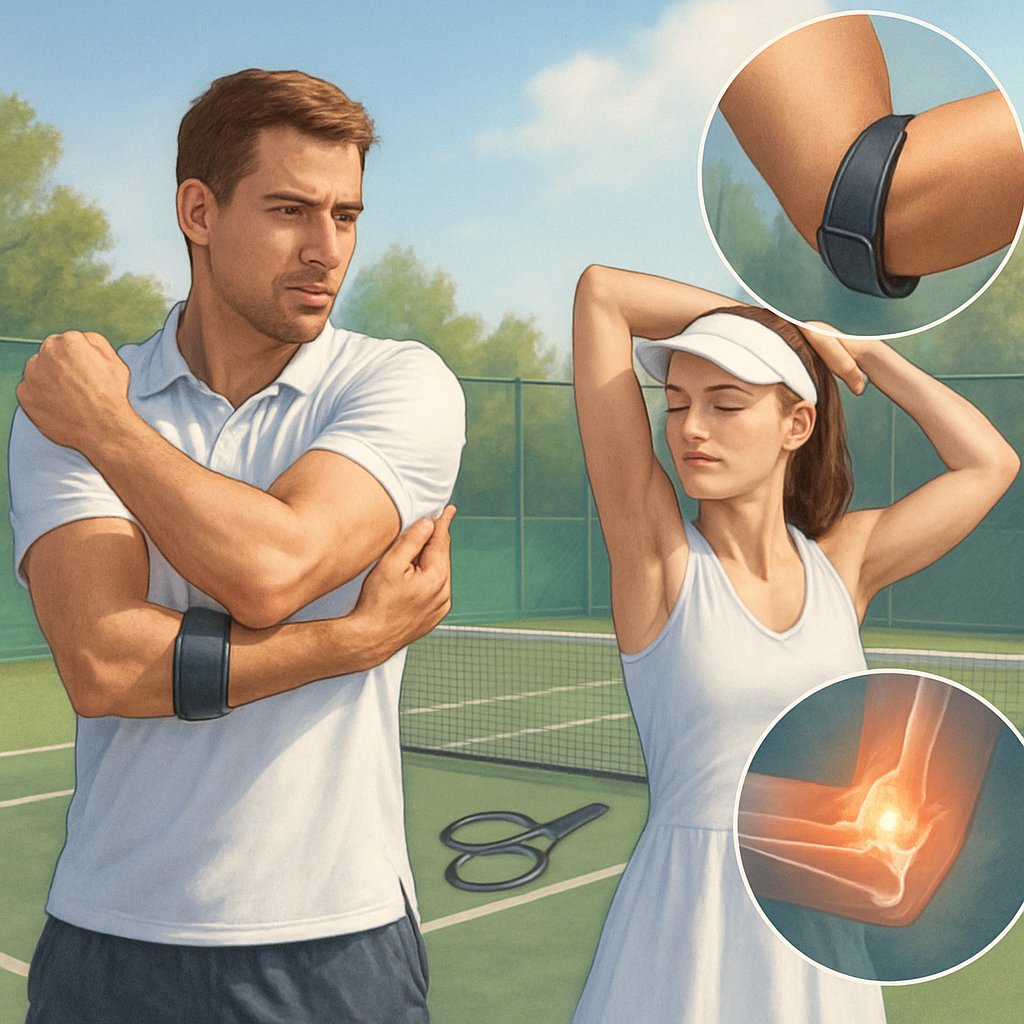
The real trick to beating tennis elbow is acting before you’re hurting. That means focusing on good form, taking regular breaks, and doing strengthening exercises.
A lot of people wait for pain to show up before they do anything. By then, recovery drags on and might even need a doctor’s help.
Simple changes in how you work, exercise, and move can save your elbows for years. Here’s how to keep those elbows healthy and pain-free.
Key Takeaways
- Tennis elbow comes from overusing your arm, but you can stop it before it starts
- Regular breaks and proper form protect your elbows
- Strengthening and smart adjustments help keep elbow pain away
What Is Tennis Elbow and Why Should You Prevent It?
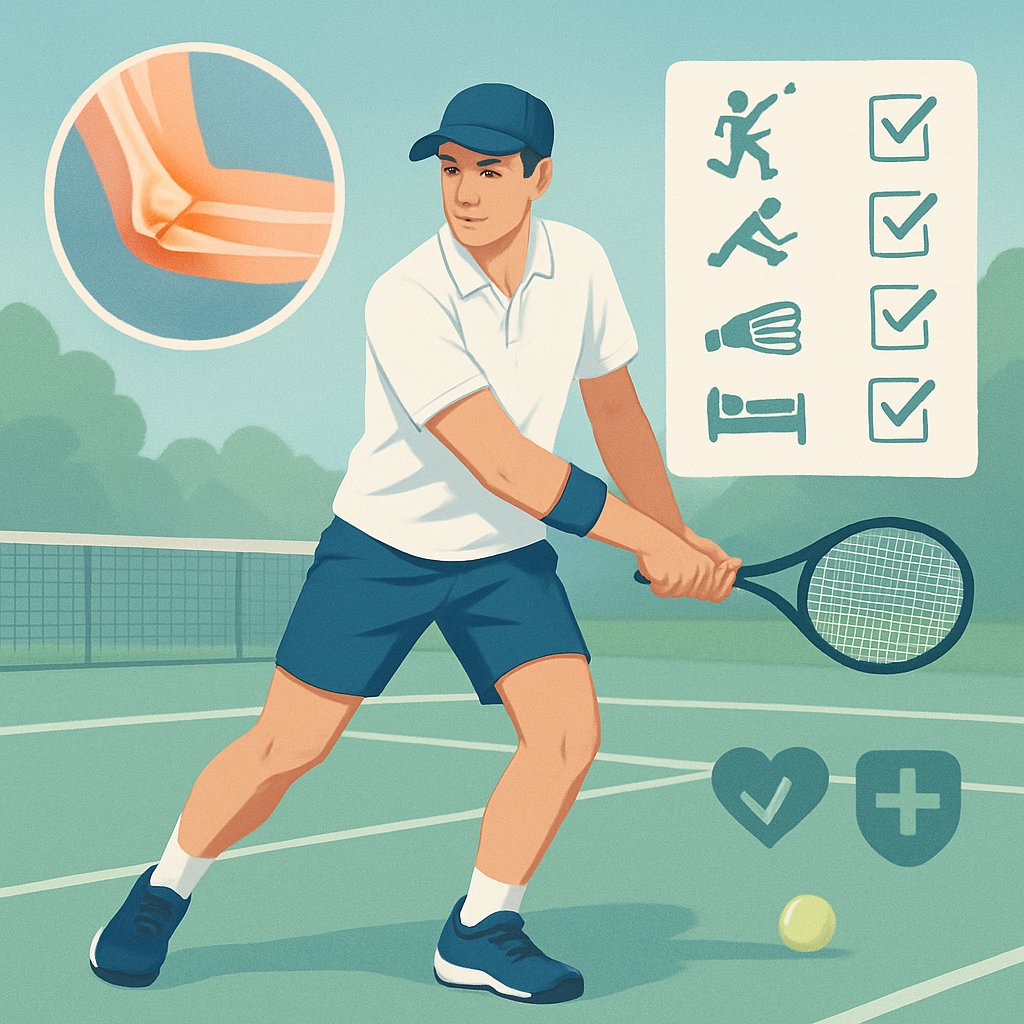
Tennis elbow affects millions worldwide. It causes stubborn pain and can really mess with your daily life.
This condition develops from overusing certain muscles. If you ignore it, it can seriously impact how you live.
Understanding Lateral Epicondylitis
Tennis elbow is the everyday name for lateral epicondylitis. It strikes the outer part of your elbow where tendons meet bone.
The problem starts when tendons in your forearm get damaged or inflamed. These tendons link your forearm muscles to that bony bump on your elbow.
You don’t have to play tennis to get this. Oddly enough, most folks with tennis elbow have never even held a racket.
Pain usually starts as a mild ache. It can grow into something that makes even shaking hands or turning a doorknob tough.
Key symptoms include:
- Pain on the outside of your elbow
- Weak grip strength
- Pain that gets worse when you lift things
- Morning stiffness
Common Causes and Risk Factors
Tennis elbow pops up from repetitive arm movements that tire out your forearm muscles. Your risk jumps if you repeat the same motion for long stretches.
Typing, painting, carpentry, and racquet sports are common triggers. Even using a screwdriver can set it off.
High-risk jobs:
- Construction workers
- Office workers who type a lot
- Painters and decorators
- Cooks and chefs
- Musicians
Age matters, too. People between 30 and 50 get it most often. As you age, your muscles and tendons lose flexibility and are easier to injure.
Poor technique in sports or with tools increases your risk. Equipment that doesn’t fit right can make things worse.
How Tennis Elbow Impacts Daily Life
Tennis elbow can make even simple things a hassle. The pain sometimes gets so bad you start skipping normal activities.
Lifting a coffee cup, opening jars, or carrying groceries can hurt. Some people can’t grip objects firmly at all.
Work can really suffer if tennis elbow sets in. Anything that needs repetitive hand or arm movements becomes a challenge.
You might even stop doing sports or hobbies you love. Pain can make tennis, golf, or other activities feel impossible.
Sleeping gets tricky, too. Lying on the bad arm can be uncomfortable and leave you tired the next day.
Fundamental Strategies to Prevent Tennis Elbow
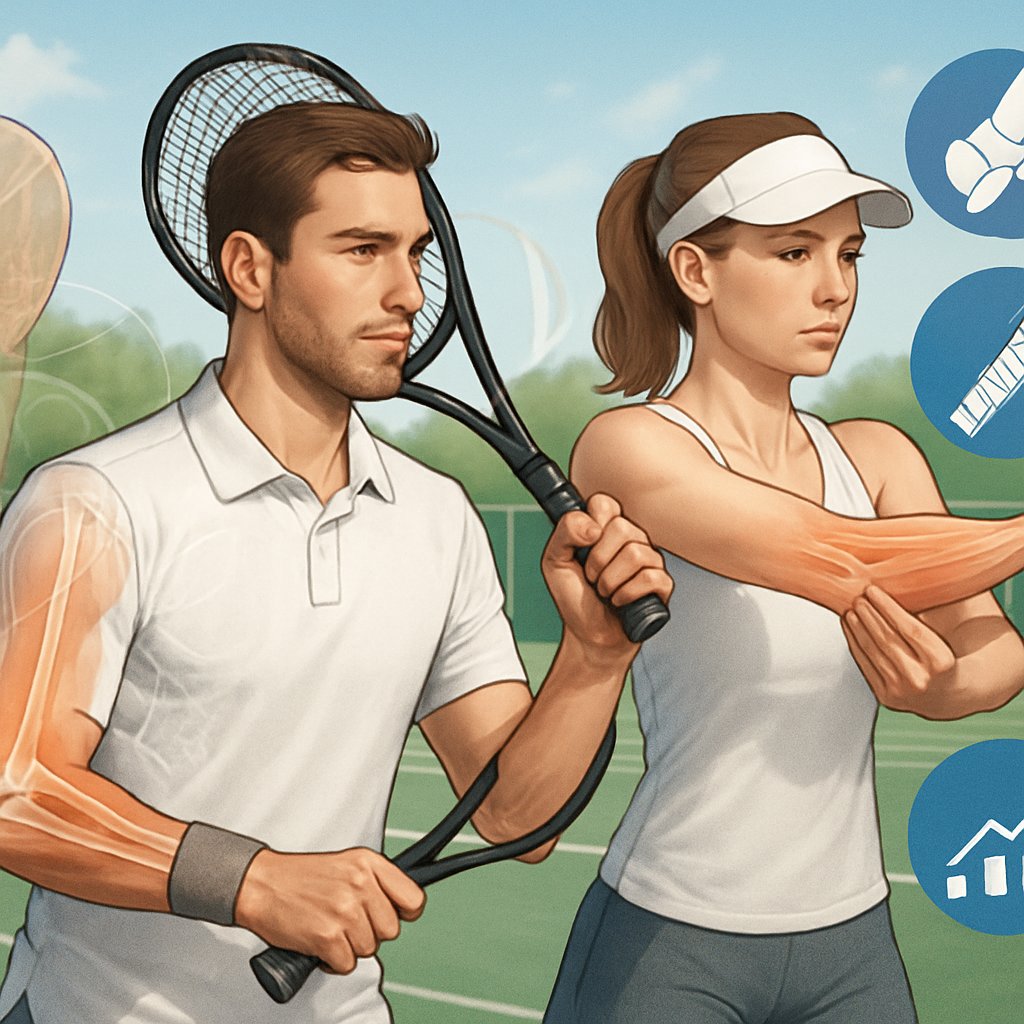
Tennis elbow shows up when your arm muscles get pushed too hard for too long. The best way to avoid it is to cut back on repetitive motions, use good form, and pick the right tools.
Reducing Repetitive Arm Movements
Repeating the same arm motion over and over wears out your forearm. That’s when small tears start near your elbow.
Take breaks every half hour during repetitive work. That gives your muscles a shot at recovering.
Switch up your activities during the day. If you’re typing for work, take breaks to do something that uses different muscles.
Try using your non-dominant hand for small tasks like opening doors or carrying light stuff.
Suggested break schedule:
- Every 30 minutes: 2–3 minute rest
- Every hour: 5–10 minute break with some stretching
- Every 2 hours: 15-minute break from arm-heavy work
Don’t overdo activities that strain your forearms. For example, playing tennis for hours without a break is asking for trouble.
Adopting Proper Technique in Sports and Work
Bad technique puts extra pressure on your elbow. Learning the right way to move keeps your arm muscles safer.
In tennis and racquet sports:
- Keep your wrist straight when hitting
- Use your whole body for power, not just your arm
- Try to hit the ball in the racket’s center
For computer work:
- Keep wrists straight while typing
- Set your keyboard at elbow height
- Grip your mouse with your whole hand
When lifting:
- Bend your knees, not your back
- Hold objects close to your body
- Use both hands if possible
Getting a lesson from a coach or instructor can help. They’ll spot bad habits you might not notice.
Choosing the Right Equipment
The wrong gear makes your muscles work way harder than they should. Over time, that’s a recipe for tennis elbow.
For tennis rackets:
- Go for a bigger head size (100+ square inches)
- Lower string tension helps
- Choose a grip size that feels right in your hand
Hold the racket and check for a finger-width gap between your fingertips and palm.
For tools at work:
- Look for padded, non-slip handles
- Pick lighter options if you can
- Use power tools instead of manual ones for big jobs
Swap out old equipment regularly. Worn strings or dull tools just make your muscles work overtime.
Grip strength matters. Tools that are too heavy or awkward can wear down your grip over time.
Exercise and Stretching Routines for Tennis Elbow Prevention

Doing regular strengthening and stretching builds forearm muscles that can take a beating. Grip training protects your tendons from daily stress.
Essential Strengthening Exercises
Wrist curls work the flexor muscles underneath your forearm. Sit with your arm on a table, palm up, holding a light weight. Curl your wrist up slowly.
Start with 2–3 pounds and do 15 reps. Rest between sets.
Reverse wrist curls hit the extensor muscles on top of your forearm. Same position, but palm down. Lift the weight by extending your wrist.
These moves balance out strength on both sides of your forearm. Weak extensors are a common problem.
Eccentric exercises help even more. Lower the weight super slowly during reverse wrist curls. It’s not easy, but it works.
Do these exercises three times a week. Always take a day off in between.
Effective Stretching Techniques
The wrist flexor stretch loosens tight muscles under your forearm. Hold your arm out, palm up, and gently pull your fingers back with your other hand.
Hold for 30 seconds and repeat three times. You should feel a gentle stretch—never pain.
The wrist extensor stretch targets the top side. Arm out, palm down, push your hand down and in with light pressure.
Doing both stretches keeps your forearms balanced. Tight muscles can tug on your elbow and cause pain.
Stretch before and after anything that stresses your arms. Hold each stretch steady—don’t bounce.
Developing Grip Strength
Tennis ball squeezes are simple but effective. Hold a tennis ball and squeeze for five seconds, then release. Do this 15 times.
Strong grip muscles support your elbow during lifting and gripping. Weak hands just make your forearm work harder.
Finger extensions keep things balanced. Wrap a rubber band around your fingers and stretch them apart.
Train grip strength two or three times a week. Mix it up with different balls or stress toys.
Optimizing Your Work and Sport Environment
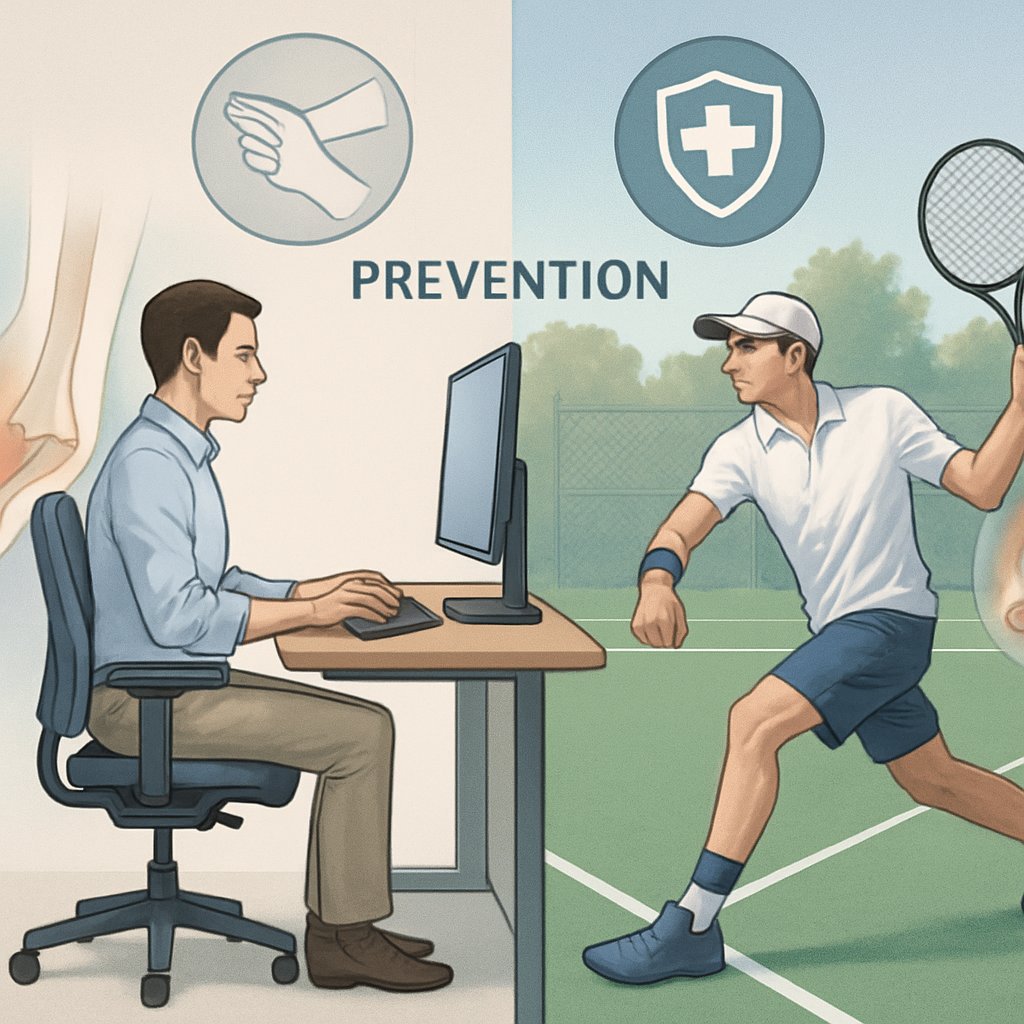
Your workspace and sports setup matter more than you might think. Small tweaks to your desk, gear, or technique can keep your forearm muscles safe.
Ergonomics at the Workplace
Keep your wrists straight when typing or using a mouse. Your hands should line up with your forearms to cut down on strain.
Put your computer screen at eye level. That way, you won’t hunch forward and put stress on your arms and shoulders.
Use a keyboard and mouse that fit your hands. Ergonomic tools make repetitive tasks easier.
Workspace tips:
- Chair height lets elbows bend at 90 degrees
- Keyboard and mouse at elbow level
- Take breaks every 30–60 minutes
- Keep documents beside your screen
Take quick breaks during long computer sessions. Stretch your wrists and shake out your hands every 20 minutes.
Pick tools that don’t need a lot of grip strength. Bigger handles and lighter weights help.
Sports-Specific Adjustments for Injury Prevention
Choose a racket with the right weight and grip size. A heavy racket or wrong grip strains your elbow.
Lower string tension on your racket to reduce shock. Less vibration means less elbow pain.
Checklist for racket sports:
- Grip size: measure from palm crease to ring finger tip
- Racket weight: lighter (9–10 oz) is better for beginners
- String tension: lower for comfort, higher for control
Work on your swing with a coach. Bad form can lead to overusing certain muscles.
Warm up before any sport. Cold muscles and tendons are easier to injure.
Replace gear when it wears out. Old grips and strings don’t absorb shock as well.
Long-Term Habits and Lifestyle Changes
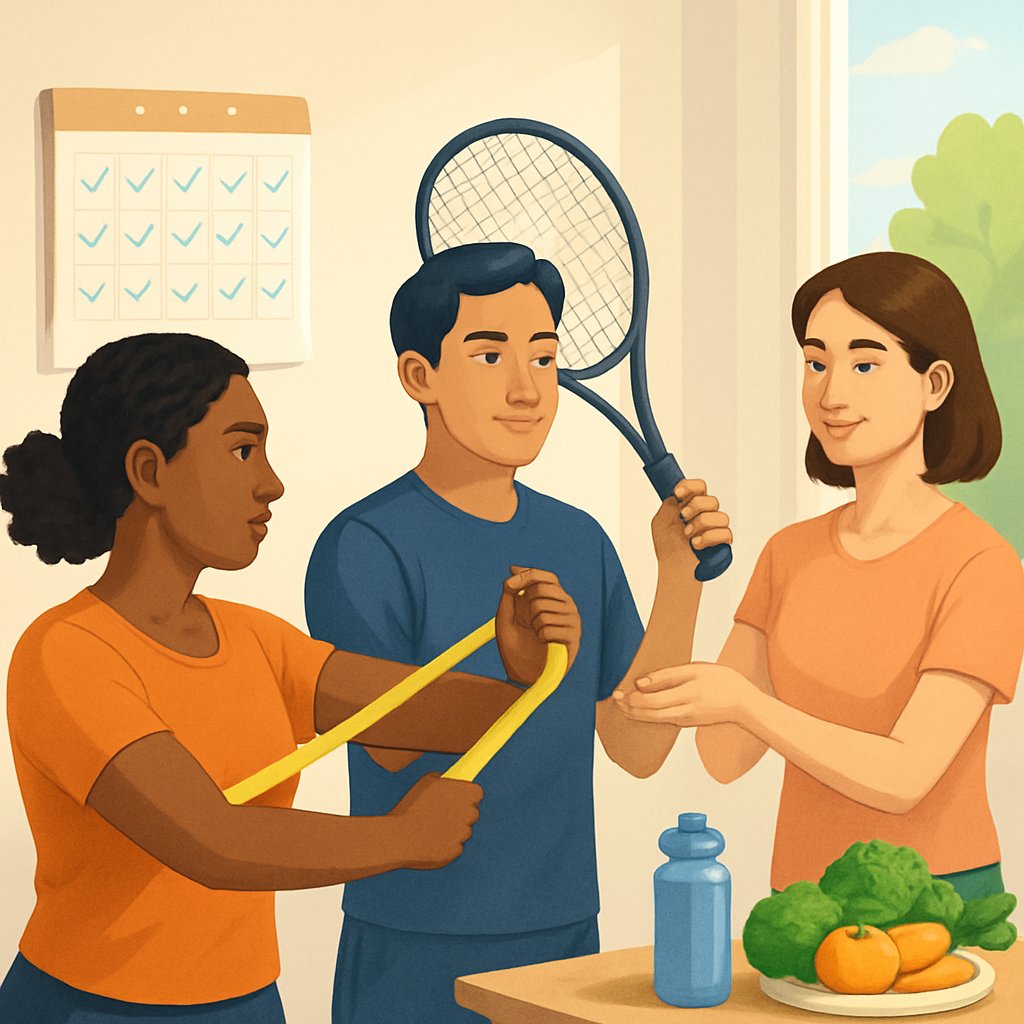
Strong daily habits and smart choices are your best defense against tennis elbow. Stick with it, and your elbow joint will thank you.
Building Resilience with Consistent Practice
Your elbow gets tougher when you challenge it slowly and steadily. Start with light resistance exercises three times a week. Focus on wrist curls, reverse curls, and forearm stretches.
Daily Strength Routine:
- Wrist flexor stretches (30 seconds each)
- Eccentric strengthening (2 sets of 15)
- Grip exercises with a stress ball (5 minutes)
Build up weight in small steps every couple of weeks. Tendons adapt slowly, so don’t rush it.
Mix up your exercises. A blend of strengthening and stretching keeps your muscles both strong and flexible.
Recognizing Signs Before Injury
Watch out for early warning signs days or even weeks before real pain hits. Mild soreness on the outside of your elbow after repetitive work is a red flag.
Red Flags:
- Morning forearm stiffness
- Weak grip when shaking hands
- Pain when lifting coffee cups or opening jars
- Tenderness on that bony elbow bump
Stop whatever’s making it worse when you notice these signs. Ignoring them can turn a small problem into a big one.
Keep track of symptoms in a notebook or your phone. Jot down what triggers discomfort and how long it lasts.
Incorporating Breaks and Recovery Techniques
Regular breaks during repetitive tasks really cut down your injury risk. Try the 20-20 rule: every 20 minutes, take a 20-second break during computer work or manual tasks.
Effective Recovery Methods:
- Use ice therapy for 10-15 minutes after activity.
- Do gentle stretching between work sessions.
- Get proper sleep—aim for 7-8 hours—for tissue repair.
- Eat anti-inflammatory foods like berries and fish.
Active recovery usually works better than just resting completely. Light movement keeps blood flowing to your tendons.
Gentle stretching and easy activities help prevent tennis elbow without piling on extra stress.
Schedule recovery time like you would a work meeting. Your elbow needs regular care if you want it to stay healthy over time.
Frequently Asked Questions

Tennis elbow brings up a lot of questions about care and treatment. Here are some answers on the best exercises, proven treatments, and prevention methods to help you manage and avoid this common issue.
What are effective exercises to strengthen the muscles around the elbow?
Eccentric exercises are best for building elbow strength. These focus on slowly lowering weights instead of lifting them.
Wrist curls help your forearms get stronger. Hold a light weight, slowly lower your wrist, then bring it back up.
Grip strengthening works too. Use a tennis ball or stress ball—squeeze and hold for 5 seconds, then let go. Do this 10-15 times.
Try resistance band moves for controlled movement. Pull the band toward you using your wrist, then slowly return to the start.
Which treatments are proven to provide rapid relief from tennis elbow symptoms?
Rest is your first step for quick relief. Stop activities that hurt and give your elbow a break.
Apply ice for 15-20 minutes a few times a day during the first few days. It helps bring down inflammation fast.
Over-the-counter pain meds like ibuprofen can reduce pain and swelling. Just stick to the package directions.
Physical therapy targets recovery. A therapist can show you specific stretches and exercises for faster results.
What anti-inflammatory methods are considered the best for tennis elbow?
Ice is still the go-to anti-inflammatory method. Use it for 15-20 minutes at a time, especially after activities.
Medications like ibuprofen or naproxen help with pain and swelling. Take them as the package says.
Gentle stretching throughout the day helps calm inflammation naturally. Stretch your forearm muscles several times.
Rest matters too. Avoid repetitive motions that strain your elbow.
How can a tennis elbow brace aid in preventing or alleviating pain?
Tennis elbow braces take pressure off injured tendons. They press on certain spots on your forearm.
The brace shifts force away from the sore area, so you can use your arm with less pain.
Braces help most during activities that usually cause pain. Wear one while playing sports or doing repetitive work.
Pick a brace that fits snugly but doesn’t cut off circulation. It should feel supportive, not restrictive.
Is it possible to permanently cure tennis elbow, and if so, how?
You can cure tennis elbow for good with the right treatment. Most people heal up in 6-12 months.
Rest and steady rehab are essential. Stick to your treatment plan to keep the problem from coming back.
Fixing underlying causes goes a long way. Improve your technique and strengthen weak muscles.
A few severe cases might need surgery, but honestly, most folks recover fully without it.
What steps can be taken to prevent elbow pain when lifting and gripping objects?
Use your whole body when lifting. Bend your knees and try to keep your back straight, especially if you’re picking up something heavy.
Build up your grip strength slowly. It’s not a great idea to jump straight into heavier weights or longer gripping sessions.
Take breaks often during repetitive tasks. Every 15 or 20 minutes, give your hands and arms a little rest.
Try tools with bigger handles when you can. Larger grips make you use less force, which usually means less strain on your elbows.
